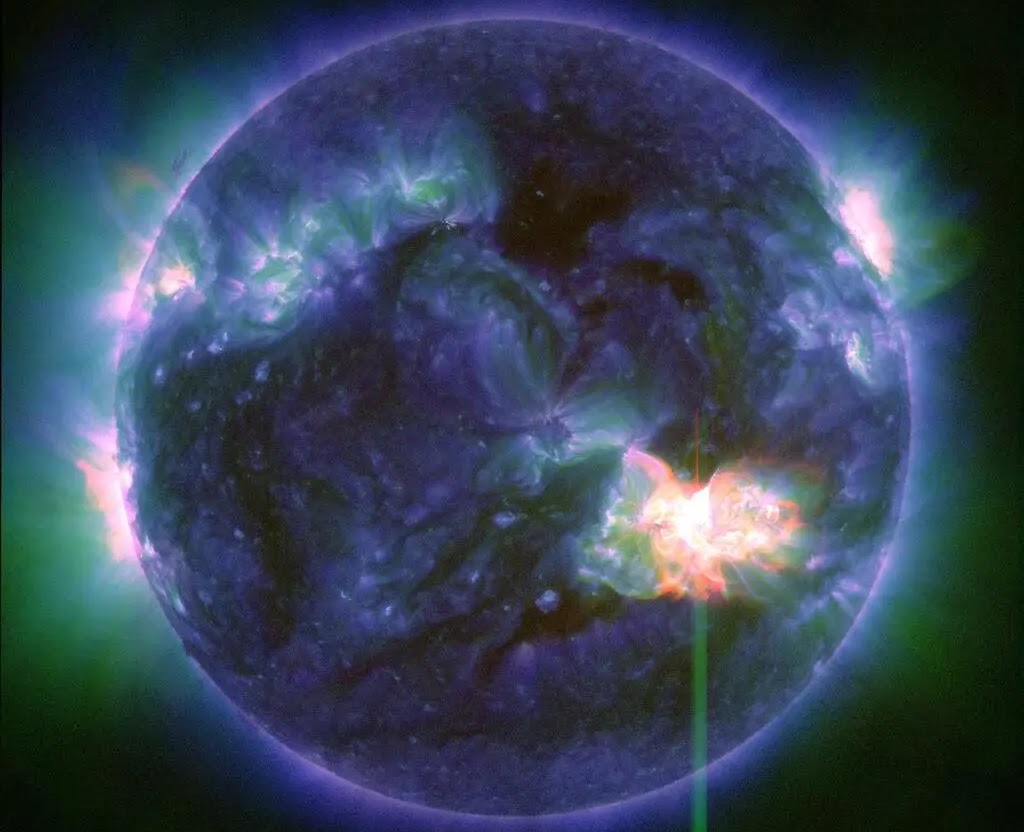
| NASA‘s Solar Dynamics Observatory captured this image of a solar flare – as seen in the bright flash in the lower right – on May 9, 2024. The composite image combines three wavelengths of extreme ultraviolet light that highlight the extremely hot material in flares and which is colorized in green, blue, and red. Credit: NASA/SDO |
NOAA‘s National Weather Service Space Weather Prediction Center issued a Severe (G4) Geomagnetic Storm Watch for the evening of Friday, May 10, 2024, following a series of solar flares and coronal mass ejections (CMEs) that began on May 8.
Space weather forecasters say that additional solar eruptions could cause geomagnetic storm conditions to persist through the weekend.
A large sunspot cluster has produced several moderate to strong solar flares since Wednesday at 5:00 am ET.
At least five flares were associated with CMEs that appear to be Earth-directed. SWPC forecasters will monitor NOAA and NASA’s space assets for the onset of a geomagnetic storm.
Geomagnetic storms can also trigger spectacular displays of aurora on Earth. A severe geomagnetic storm includes the potential for aurora, also known as Northern Lights, to be seen as far south as Alabama and Northern California, according to NOAA’s space weather forecasters.
Solar flares are powerful bursts of energy. Flares and solar eruptions can impact radio communications, electric power grids, navigation signals, and cell phones, according to NOAA,
The susnpots are big enough to be seen without a telescope but with eclipse glasses.
NASA says that solar events will continue to increase as we near solar maximum in 2025, and our lives and technology on Earth, as well as satellites and astronauts in space, will be impacted by the space weather.
Solar Cycle 25 is expected to peak with 115 sunspots in July 2025.
The solar flare is classified as as an X1.1 flare. X-class denotes the most intense flares, while the number provides more information about its strength.
Copyright 2023-2025 FloridaWord.com